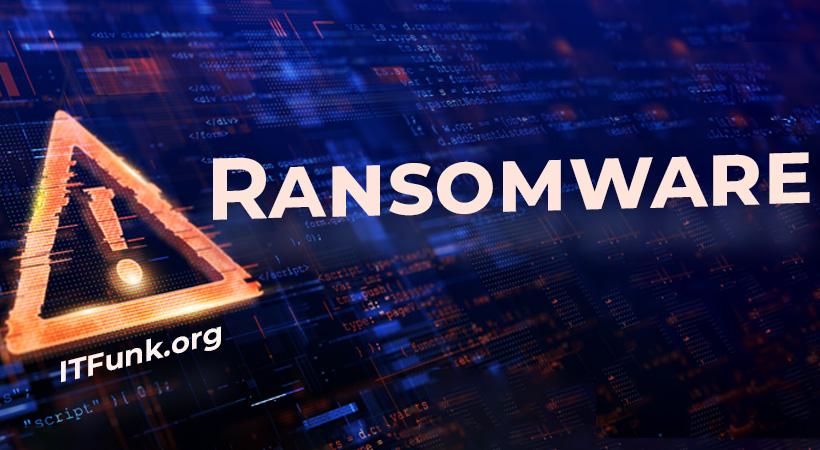In recent years, the rise of ransomware attacks has become a significant cybersecurity concern. One of the latest additions to the ever-growing list of ransomware variants is Zombi. This malicious program belongs to the MedusaLocker family and is known for targeting large organizations and companies. In this article, we will explore the nature of the Zombi ransomware threat, the potential dangers it poses, how it spreads, and ways to protect your system against such infiltrations.
Nature of the Threat
Zombi is a ransomware, a type of malware that encrypts the victim’s data and demands a ransom for its decryption. The ransom note usually informs the victim that their network has been breached, leading to the encryption of files using robust cryptographic algorithms like RSA and AES. Moreover, the ransomware operators employ double extortion tactics, threatening to leak or sell the stolen data if the ransom is not paid.
Files encrypted by Zombi ransomware are typically marked with a “.zombi2” extension, though the number may vary depending on the variant. For example, a file originally named “1.jpg” would appear as “1.jpg.zombi2” after encryption. The ransom note, titled “How_to_back_files.html,” is generated post-encryption, and it provides instructions on how to pay the ransom to obtain the decryption key.
Dangers Posed by Zombi Ransomware
Zombi ransomware poses several significant dangers to both individual users and organizations:
- Data Encryption: Zombi encrypts files using strong cryptographic algorithms, rendering them inaccessible to the victim. This can cause substantial data loss and disrupt operations for organizations.
- Double Extortion: The threat of leaking or selling stolen data creates additional pressure on victims to pay the ransom, potentially leading to financial losses and damage to the victim’s reputation.
- Financial Impact: Paying the ransom is risky as there is no guarantee that the attackers will provide the decryption key. Victims may end up losing both their data and their money.
- Disruption: The attack can disrupt an organization’s operations, leading to downtime, loss of productivity, and potentially significant financial losses.
How Zombi Ransomware Spreads
Ransomware like Zombi typically spreads through various methods, often relying on social engineering tactics:
- Phishing: Malicious attachments or links in spam emails are a common vector for ransomware distribution. Users are tricked into opening these files, initiating the malware installation process.
- Malicious Downloads: Ransomware can be delivered through drive-by downloads, deceptive online scams, and dubious download sources, such as freeware, third-party websites, P2P sharing networks, and more.
- Malvertising: Cybercriminals may use malicious advertisements that lead to ransomware infections when clicked by unsuspecting users.
- Self-Proliferation: Some ransomware variants can self-propagate through local networks and removable storage devices like external hard drives and USB flash drives.
- Disguised Files: Malware may be disguised as ordinary files in various formats, including archives (ZIP, RAR), executables (.exe), documents (e.g., Microsoft Office, PDF), JavaScript, and more.
Text presented in the “How_to_back_files.html” file:
YOUR PERSONAL ID:
–
/!\ YOUR COMPANY NETWORK HAS BEEN PENETRATED /!\
All your important files have been encrypted!
Your files are safe! Only modified. (RSA+AES)
ANY ATTEMPT TO RESTORE YOUR FILES WITH THIRD-PARTY SOFTWARE
WILL PERMANENTLY CORRUPT IT.
DO NOT MODIFY ENCRYPTED FILES.
DO NOT RENAME ENCRYPTED FILES.
No software available on internet can help you. We are the only ones able to
solve your problem.
We gathered highly confidential/personal data. These data are currently stored on
a private server. This server will be immediately destroyed after your payment.
If you decide to not pay, we will release your data to public or re-seller.
So you can expect your data to be publicly available in the near future..
We only seek money and our goal is not to damage your reputation or prevent
your business from running.
You will can send us 2-3 non-important files and we will decrypt it for free
to prove we are able to give your files back.
Contact us for price and get decryption software.
email:
ithelp07@securitymy.name
ithelp07@yousheltered.com
* To contact us, create a new free email account on the site: protonmail.com
IF YOU DON’T CONTACT US WITHIN 72 HOURS, PRICE WILL BE HIGHER.
* Tor-chat to always be in touch:
qd7pcafncosqfqu3ha6fcx4h6sr7tzwagzpcdcnytiw3b6varaeqv5yd.onion
Protection and Prevention Against Zombi Ransomware
Protecting your system against Zombi ransomware and similar threats is essential for cybersecurity. Here are some effective strategies to safeguard your data:
- Backup Data: Regularly backup your important data to separate, offline storage devices or remote servers. This ensures you can recover your data without paying a ransom in case of an attack.
- Email Safety: Be cautious when opening email attachments and clicking on links, especially if they come from unknown or suspicious sources. Use email filtering and spam protection tools to help identify potential threats.
- Software Updates: Always update your operating system and software using official channels. Avoid using illegal activation tools (“cracks”) and third-party updaters as they can contain malware.
- Security Software: Install reputable antivirus and anti-malware software and keep it up to date. Regularly scan your system for potential threats and remove any detected issues.
- User Education: Educate yourself and your organization’s employees about the dangers of ransomware and how to recognize phishing attempts and suspicious downloads.
Conclusion
Zombi ransomware is a significant cybersecurity threat that targets organizations and individuals, encrypting their data and demanding ransoms for decryption. Understanding the nature of this threat, how it spreads, and taking preventive measures can help protect your data and systems from potential attacks. Remember that the best defense against ransomware is proactive prevention and backup strategies rather than relying on paying ransoms, which often do not guarantee data recovery. Stay vigilant, keep your systems up to date, and maintain secure data backups to defend against the Zombi ransomware and similar threats.





